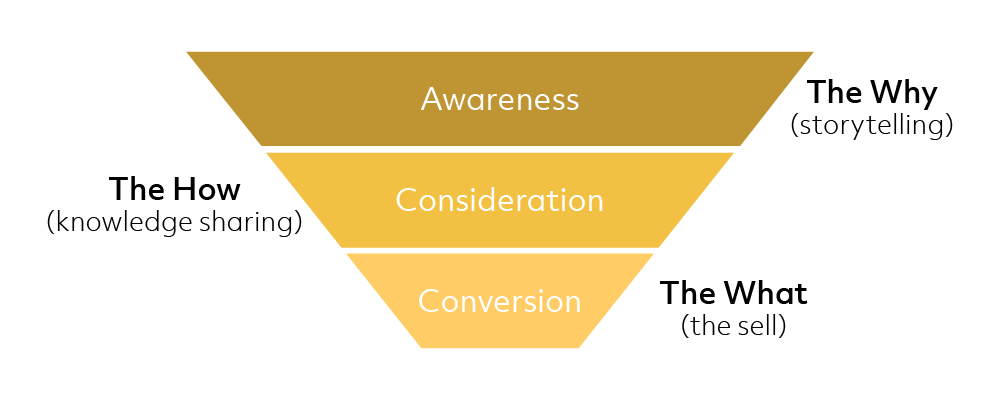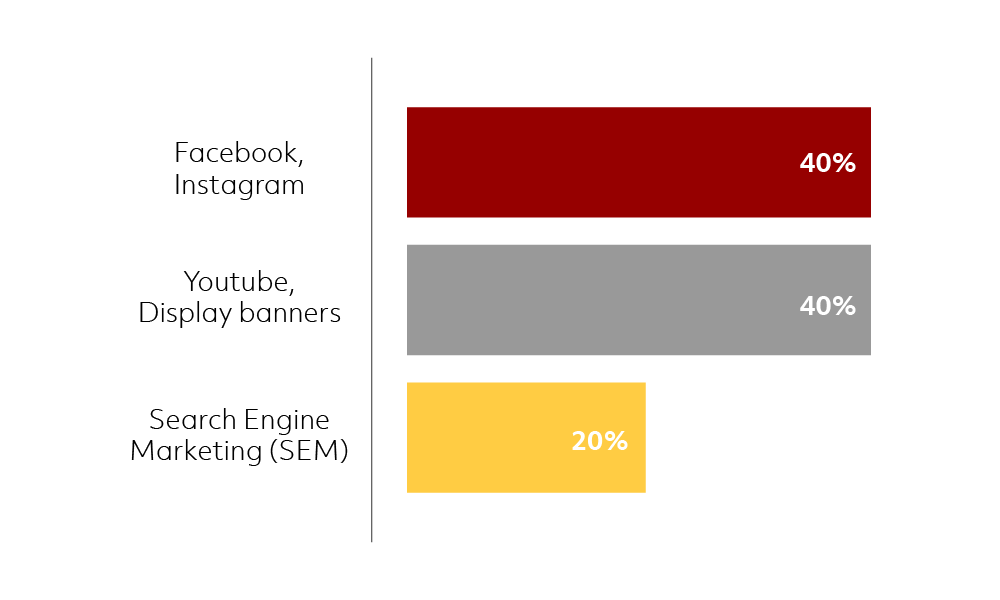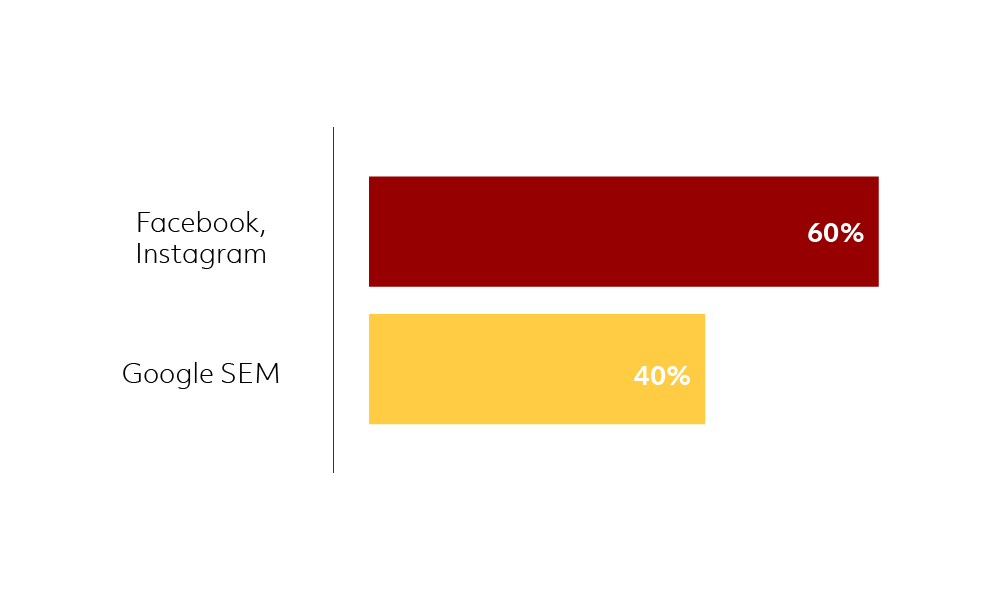Decision making is a journey.
Whether it is moving to a new country, buying a new car or even choosing what to have for lunch — everyone has had to go through a decision-making process that finally leads to a conclusion (with the least amount of regret hopefully!).
Marketing is all about making sure that when the customer is ready to make their decision, your company’s brand is the preferred choice. In order to be able to do this successfully, it is important that a full-funnel marketing approach is taken, rather than focusing and optimising on one particular stage of the journey (which usually is the Conversion stage). Regardless of the marketing channel/medium of choice, they need to be set up and optimised towards converting the potential customer from one stage to the next.

These stages can be segmented as Awareness, Consideration and finally Conversion.
- Awareness: This needs to be the “Love-at-first-sight” moment.
This stage is where the brand gets to introduce products/services to its target market, potential customers.
- Consideration: “She loves me? She loves me not?..”
Here, the brand is being considered, but also being compared to its competitors. The audience needs to be made aware of what the brand has to offer and why it should be their first choice.
- Conversion / Purchase: You have popped the question and are waiting for her “Yes!”.
The audience is ready to convert at this stage. It is essential to ensure that they are directed to the accurate path for a smooth conversion.
Awareness
It is important to keep in mind that at this stage, the audience is not ready to make a decision yet; the audience has probably just been introduced to the brand’s offerings. They have either identified a problem or situation that they need a solution for, or they need to be made aware that the brand can help them solve an issue that they did not realize they had.
Hence, at this stage, it’s best not to target them with hard-selling ads or drive them directly to your checkout funnel. Awareness doesn’t lead directly to conversion most of the time. Rather, the best practice is to take a more educational, informative and responsive approach through content and messaging.
To effectively serve the purpose of this stage, we recommend making use of channels or ad formats such as:
- Facebook, Instagram (branding / reach / traffic objective) – 40%
- Youtube, display banners (GDN and perhaps try programmatic) – 40%
- Adventurous marketers can also set up (Search Engine Marketing) SEM campaigns with more generic keywords that will enable greater brand outreach in front of a larger audience group that is actively researching their needs. – 20% that is actively researching their needs. – 20%

Consideration
In this stage, the audience will begin to better understand their needs and actively start looking for options that can help meet them. They begin to evaluate the matter based on urgency, quality, price, ease of use, etc. And it is most likely that they evaluate these across multiple brands.
Focus and attention should be directed towards showcasing unique selling points to encourage consideration. The audience should be shown why they are better than their competition.
Channels and ad types we would recommend at this stage are:
- Facebook / Instagram (Traffic / Conversion objective)- 50%
- Google SEM – 40%
- GDN (mostly on remarketing audiences) – 10%

Conversion
The final stage has been reached! The audience at this stage sees the brand or product as the solution. After much consideration and comparison, now that they are ready to become a customer, it is vital that ads at this stage are very customised and have clear CTAs, directing clicks to the most relevant page to convert, as easily as possible.
Ads at this stage should not focus or emphasise on educating the audience or promoting the product or service; it should be about taking the final action.
Channels and ad formats we would recommend at this stage are:
- Facebook / Instagram – 60%
- SEM – 40%

Bonus Stage
Re-consideration
Marketing efforts do not end with the first conversion. No matter the industry, retention of customers has always been cheaper than acquisition. Of course, matters such as service quality, product durability and brand recognition play a part, but for a business to continuously grow, it is vital that customers remain loyal.
To do this, brands need to continuously reassure their customers why they were chosen. Make use of vouchers, discounts, sales or specific benefits that are only made available to existing customers.
If you want to understand better which ad formats to utilise or how best to plan for each stage of the funnel for your product, service, or brand, drop us a note at hello@admiral.digital.
